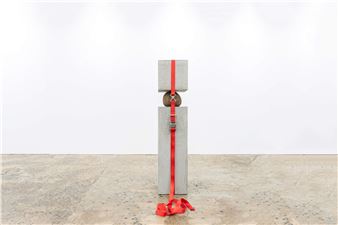From Proto-minimal to Minimalist
Starting with the word, it comes from the Latin вҖҳminimusвҖҷ meaning smallest (in the literal physical sense) and by extension вҖҳthe leastвҖҷ. Current usage has вҖҳMinimalismвҖҷ (capital M to recognise it as a proper noun) is the name of the art movement principally in New York in the 60s and 70s вҖ“ Stella, Judd, Andre, LeWitt, Martin, Rothko, and others, with the likes of Soulages in France вҖ“ and perceiving it to be a reaction against the preceding Abstract Expressionism along the lines of, say, the shift from 18th century Classicism to the Romanticism of the 19th Century.
But a closer look immediately reveals Malevich and other Russians in the 1920s and the likes of Mondrian in the 1930s (but not the 1940s) engaged in the practice of what amounts to minimalism: paring down their works to the simplest and most basic essentials. In Australia, the two longest serving minimalists are Robert Hunter and Alan Mitelman.
Humans see the world as a host of shapes with some being inherently more complex than others: footballs are simpler than cars which are simpler than trees, and so on. Straight lines are simpler than twisting lines and circles are simpler than a Borromean knot. We also see all the colours of the spectrum, except after dark when we see our surroundings in shades of grey.

Recommended for you
Starting with the word, it comes from the Latin вҖҳminimusвҖҷ meaning smallest (in the literal physical sense) and by extension вҖҳthe leastвҖҷ. Current usage has вҖҳMinimalismвҖҷ (capital M to recognise it as a proper noun) is the name of the art movement principally in New York in the 60s and 70s вҖ“ Stella, Judd, Andre, LeWitt, Martin, Rothko, and others, with the likes of Soulages in France вҖ“ and perceiving it to be a reaction against the preceding Abstract Expressionism along the lines of, say, the shift from 18th century Classicism to the Romanticism of the 19th Century.
But a closer look immediately reveals Malevich and other Russians in the 1920s and the likes of Mondrian in the 1930s (but not the 1940s) engaged in the practice of what amounts to minimalism: paring down their works to the simplest and most basic essentials. In Australia, the two longest serving minimalists are Robert Hunter and Alan Mitelman.
Humans see the world as a host of shapes with some being inherently more complex than others: footballs are simpler than cars which are simpler than trees, and so on. Straight lines are simpler than twisting lines and circles are simpler than a Borromean knot. We also see all the colours of the spectrum, except after dark when we see our surroundings in shades of grey.
Artists on show
- A.D.S. Donaldson
- Aldo Iacobelli
- Allan Mitelman
- Asher Bilu
- Colin Duncan
- Dale Hickey
- David Blackburn
- Frank Hodgkinson
- Geoffrey de Groen
- Godfrey Miller
- Ian Howard
- Jan Murray
- Lynne Boyd
- Mary Macqueen
- Melanie Howard
- Sadie Chandler
- Shane Jones
- Stacha Halpern
- Stephanie Radok
- Suzie Idiens
- Ti Parks
- Trevor Vickers
- Young-Ha Park
















